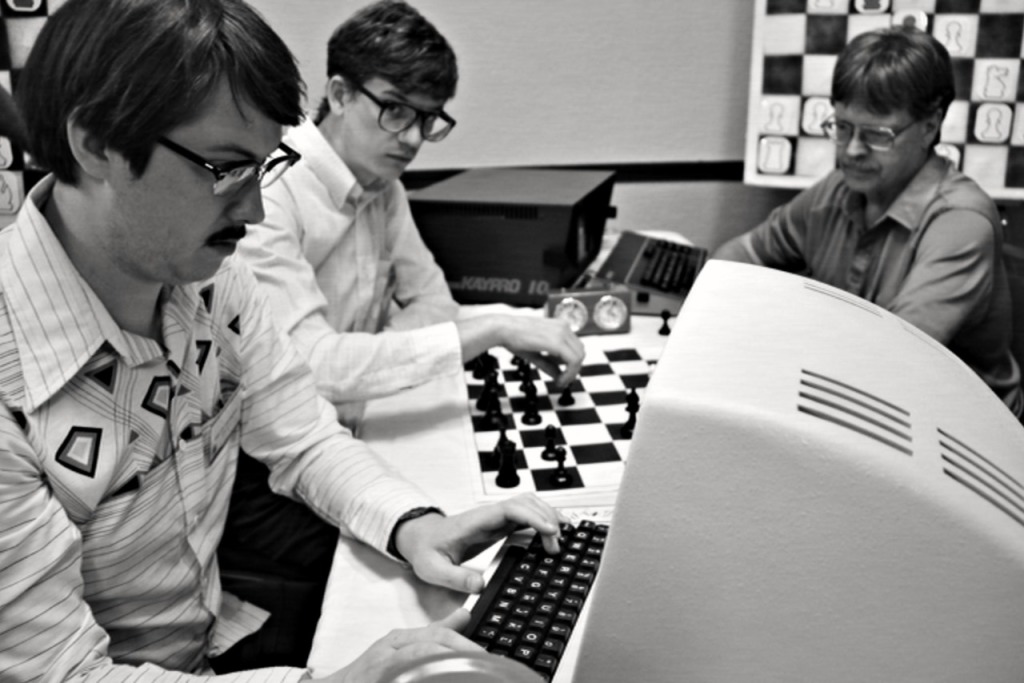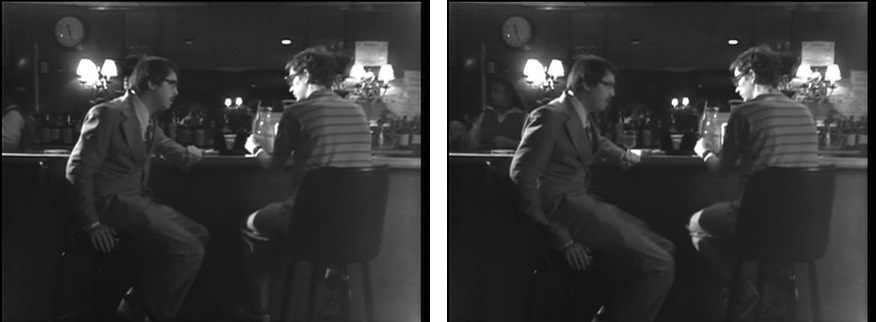
In his widely acclaimed text on history in film, History on Film/Film on History, Robert A. Rosenstone championed the historical film as a way of ‘doing history’, and put forward the notion of the filmmaker as historian. His work, and that of other historians, can be understood as a postmodernist movement away from the traditional textual history into a history that relies on many discourses. Rosenstone uses film to construct a narrative of contemporary engagement with the past. Films are ‘telling the past’ according to Rosenstone and historians should be concerned with not only what they are telling, but also how it is being told. This form of academic research in history on film has been particularly interested in films that are public controversies or adhere a change in the public perception of history.
In recent years, some historical films have employed a representation of history that can be experienced as historical whilst deconstructive and self-reflective at the same time. Hila Shachar, a researcher in English Literature, has been championing the costume drama and noted a metamodern tendency in this genre of film to move beyond deconstruction and into substance. The costume drama, although successful with audiences, has been heavily criticized as purely stylistic and unworthy of research. Rosenstone himself demarks the concept of the historical drama which “engages historical discourse and asks contemporary questions about the past”[1], by positioning it opposite the costume drama, which according to Rosenstone, “uses the exotic locale of the past as no more than a setting for romance and adventure”.[2] In her article ‘Seeking Substance in Historical Costume Films’ Shachar poses the exact opposite, she claims that costume films “shows us that behind a deconstructed history lies art, creation, identity, interiority and substance”.[3]
This metamodern approach to the representation of history is particularly present in Andrew Bujalski’s film Computer Chess. Released in 2013, Computer Chess is a mockumentary that tells the story of a group of computer programmers during a computer chess tournament in 1980. The film is notable because it was shot entirely with late ’70s consumergrade analog cameras, which Bujalski bought on Ebay. The film is therefore shot in black and white, in a 1.33:1 aspect ratio and filled with light and tape glitches.
Critics lauded the truthful historical experience of the film. To quote a few: “Bujalski and cinematographer Matthias Grunsky deliver a work that really looks and sounds as if it belongs to another time”[4], “Computer Chess is a worm tunnel through the space-time continuum, shooting us straight to the late ’70s or early ’80s”[5], “If you walk into a screening of Computer Chess without any prior knowledge, you’ll likely think two things. First, this is a real documentary about tech nerds from the 1980s”[6].
The film and its response can’t be understood through a solely postmodern deconstruction of historical narrative. Bujalski indeed uses postmodern strategies of Presentism, in which he relies on the presentation of a micro-history and an awareness of a present mode of representation. But he combines this with an optimistic, modernist mode, of imbuing the past of the film with great historical significance and presenting it, through its visuals, as a lost touchstone for our contemporary society.
The film primarily focuses on the character of Peter Bishton, a young programmer from the MIT team, and Michael Papageorge, an independent programmer, who is portrayed as a free-spirited outsider. The film relies heavily on the mockumentary style in its first act in which the tournament and the different characters are introduced. This style becomes less characteristic when the focus shifts from the tournament to Bishton and Papageorge. There is also a tonal shift that coincides with this narrower focus, when both the computers and their programmers first begin to break down. The presence of a group of older couples, seeking new-age enlightenment under the guidance of an African guru in the same hotel as the programmers, provides a further escalation of the films style and themes.
Bujalski´s employment of antiquated technology to conjure up a truthful historical experience is especially apparent in a bar-scene in the third act of the film. In this scene Peter Bishton, meets up with Martin Beuscher, a programmer for a competing team. In this meeting Beuscher tells Bishton about his involvement with a secret pentagon program and his experiments with artificial intelligence. He eventually speaks of a peculiar incident in which a computer becomes seemingly self-aware.
The shot immediately shows off one of the many downsides to the antiquated technology used in the film. The analog cameras have a high sensitivity to light which turns any lamp into a shining orb that traces in the image as it moves. Besides lightning issues, the cameras have a flat color palette which is more grey-and-grey than black-and-white.
Between the orbs of light, two characters are shown at equal height, but their engagement in the conversation is unequal. Beuscher, on the left, is turned to Bishton looking directly at him and leaning forward, while Bishton remains seated towards the bar, barely looking at Beuscher. His posture is an indication of the discomfort he is feeling, but can also indicate a form of distrust, which may only grow as the topic of the conversation turns stranger. Bishton is bathed in a shining light, the source of which is not really clear but it seems to be coming from above, given the glow of his hair. Further emphasizing his mysterious and discomforting part in this scene is the shadow in which Beuscher is shown. Only his back is illuminated. The camera is in a fixed position and is filming at a mid- to slight bottom-up angle. Lightning, camera-position and composition here is used to distance the two characters while also emphasizing their particular personas. It empowers the topic of the conversation, the mysteries of artificial intelligence, through its mise-en-scene. The technical attributes of the camera give this scene a further discomfort by combining a flat black-and-white palate with shining orbs of the lamps.

As the scene progresses, the analog technology enriches this discomfort. As a tape glitch appears Beuscher’s legs grows through doubling of the image. A moment later there is a second tape glitch and another doubling (fig. 2). Beuscher’s legs are now twice as long. This resembles a typical video game error where programming is distorting environment or character through errors in coding.[7]
As Beuscher tells about the “very chilling episode” he experienced, the audio and video are no longer synced. There seem to be two separate audio tapes of Beuscher´s speech playing at the same time, while his lip movement doesn’t seem to sync with any of them. Just a few sentences are heard clearly. Bujalski claims all glitches are incidental but the occurrence of the glitches in this scene certainly enforce its discomforting nature.[8]
It should be noted that the process of aestheticization of historical representation is by all means nothing new. History has most often been visualized in film through the appropriation of a past-like aesthetic. Films such as Schindler’s List, JFK and Forrest Gump, use black—and-white and archival-like footage extensively. These films have been subjected to discursive analysis, primarily from the field of Memory Studies, and have been revealed as postmodern aestheticization of the past and as deconstructions of historical metanarrative.[9] Although there are similarities between these films and Computer Chess, I will argue that Computer Chess is unique in its oscillation between a postmodern deconstruction of schemes of representation and a modernist search for substance and reclaiming of history.
There is a sense of postmodern Presentism in the micro-history of Computer Chess. Presentism was a new paradigm in Cultural History that was a direct response to the anti-postmodern critique of Baudrillard. It is a form of historical analysis that focusses on isolated places and events and relies heavily on present-day concepts that are anachronistically traced back in the past.[10] As Chris Lorenz points out, in academic history, presentism resolved into a collapse of past and future in the present which eventually resulted in “the obsession with the archive and with ‘heritage’ that marks the present age.”[11] Pierre Nora states that this paradigm has left us without the themes of progress and continuity and resulted in the loss of ‘the confident assumption of knowing to whom and to what we owe our existence.”[12]
The chess tournament in Computer Chess is a micro-history which is part of a teleological history of digital progress, yet it also moves away from presentism by imbuing this moment with great historical relevance. This is done in two ways, first through the visual aestheticization, the glitches and error-lines that constitute a feeling of a lost piece of history now recovered. Through his usage of consumer-grade cameras and leaving in errors and glitches in the scene above, the film enforces on us, the viewer, the notion of an authentic experience. It is as if we are watching actual archival footage that had been shot, forgotten, re-emerged and recut by Bujalski into the film we are seeing.
The second way in which Bujalski imbues his film with historical relevance is through the plotting of the film: with its focus on the dawn of the computer in society. In our current time, which is defined by the intrusion of the digital in our daily life, the programmers of Computer Chess have a pioneer-like sensibility. Bujalski shows them in their hotel rooms, working on perfecting their programming and discussing a distant future in which computers beat chessmasters, assist human beings in dating and change warfare. Working with almost ancient computer technology that seems hopelessly inadequate, they dare to dream of a future that is our own present.
The history in Computer Chess, however strange and fictional, is presented as a forgotten moment in time, now rediscovered and shown, glitches and error-lines included, as a historical touchstone for our contemporary digital time. It employs, and at the same time moves beyond, postmodern aestheticization and presentist history, into a surreal, almost myth-like, retelling of the origins of our contemporary society. It is that which makes Computer Chess feel substantial and truthful.
[1] Robert A. Rosenstone, History on Film/Film on History (London 2006), 45.
[2] Ibid
[3] Hila Shachar, “Seeking Substance in Historical Costume Films”, accessed 12 – 6 – 2014.
[4] http://www.electricsheepmagazine.co.uk/reviews/2013/11/16/computer-chess/ accessed 12 – 6 – 2014.
[5] http://www.slantmagazine.com/house/2013/15/sxsw-2013-computer-chess-swim-little-fish-swim-loves-her-gun accessed 12 – 6 – 2014.
[6] http://www.ign.com/articles/2013/11/18/computer-chess-review accessed 12 – 6 – 2014.
[6] http://www.nydailynews.com/entertainment/tv-movies/computer-chess-movie-review-article-1.1402393 accessed 12 – 6 – 2014.
[7] Various artists have embraced the video game glitch as a form of digital aesthetic. See for example the work of photographer Robert Overwege or the website of the Museum of Glitch Aesthetics (http://www.glitchmuseum.com/).
[8] Bujalski’s remarks on the accidental nature of these glitches in various interviews. See for example: http://thedissolve.com/features/interview/23-to-tell-the-story-of-icomputer-chessi-director-and/ and the directors commentary on the Masters of Cinema Blu-Ray.
[9] This essay offers little room for a coherent exploration of the vast research that these films has been subjected to. I will offer three texts as examples and gateway into this research: Jennifer Hyland Wang, ‘”A Struggle of Contending Stories” Race, Gender, and Political Memory in Forrest Gump’, in: Cinema Journal 39 (2000) nr. 3.
[10] Harry Jansen, Triptiek van de Tijd. Geschiedenis in Drievoud (Nijmegen 2010) 238 – 241.
[11] Chris Lorenz, Unstuck in time. Or: the sudden presence of the past, in: Performing the Past: Memory, History, and Identity in Modern Europe (Amsterdam 2010) 86.
[12] Pierre Nora, ‘Between Memory and History: les Lieux de Memoire’, in: Representations, 26 (1989) 16.
